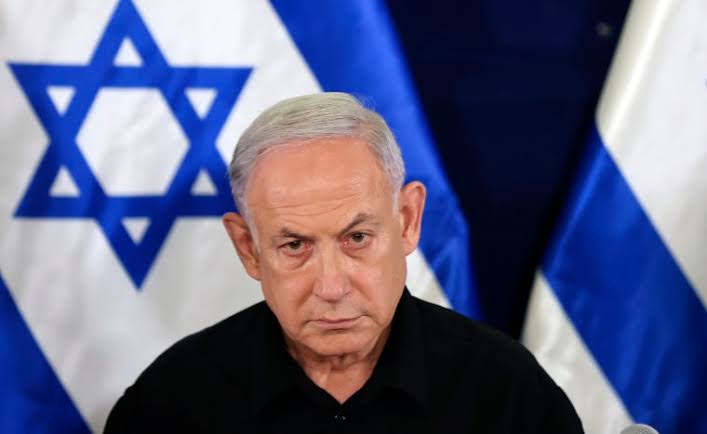By Peter Beaumont in Jerusalem
In 2019, Aviv Kochavi, then the Israel Defense Forces’ (IDF) chief of staff, delivered a bullish speech. The IDF, he proclaimed, is “all about victory”.
Assessing that the primary threats to Israel’s security were from nonstate actors such as Hamas and Hezbollah, Kochavi would the following year usher in a new operational doctrine titled “decisive victory”.
It envisaged “swift, offensive operations relying on the use of smaller units supported by massive firepower” against what had been reframed as “rocket-based terror armies”, encompassing the possibility that Israel might have to fight on two fronts at once.
Nine months into the Gaza conflict that followed Hamas’s surprise attack in southern Israel on 7 October, the state is fighting on two fronts simultaneously. But the promise of a “swift” or “decisive victory” – despite the utilisation of massive firepower with devastating consequences for civilians in Gaza – has proved illusory.
And in the midst of US-led international pressure for meaningful ceasefire talks and a hostage-for-prisoners deal, backed by the passage of a UN security council resolution, the dynamics of the ever-lengthening war have imposed their own reality.
The reported existence of letters sent by Yahya Sinwar, the Hamas leader in Gaza, describing civilian Palestinian casualties as “a necessary sacrifice”, suggest that the group sees the progress of the conflict in a fundamentally different light to Israeli officials.
While much has been made of Sinwar’s alleged claims, more significant is the framing: Hamas views its battle in terms of historical liberation movements such as the Algerian struggle for independence from France, which suffered significant civilian setbacks at the hands of French forces.
The continuing failure of meaningful ceasefire talks has exposed Israel and Hamas’s diametrically opposed views – not just on what the conflict represents today but the longer-term trajectory.
Israel’s political and military leadership has for years believed it is possible to manage its conflicts, both with the Palestinians and with Hezbollah in the north, while ignoring the political vectors driving the violence, not least the Palestinian demand for statehood and self-determination.
But Hamas and Hezbollah have long viewed a more distant horizon. For Hamas in particular, the latest war is not seen as one in a series of episodic conflicts but an engagement in a longer struggle that it believes it will ultimately win.
If there is a point of commonality in the battlefield assessments of Israel and Hamas, it is in the bleak belief on both sides that there is no option but for continued fighting.
For his part, Sinwar, in one of his reported missives, spoke in terms worthy of Macbeth. “We have to move forward on the same path we started,” the Wall Street Journal reported him writing.
“Or let it be a new Karbala,” he added, a reference to the 7th-century battle in Iraq, where the grandson of the prophet Muhammad was killed with his followers.
More widely, Hamas believes it has achieved its most significant gains away from the fighting – on the diplomatic front.
Israel’s conduct of a war with “massive firepower” and the subsequent catastrophic civilian suffering have seen it facing increasing diplomatic isolation and accusations of series war crimes, including genocide and the use of starvation as a weapon of war – charges Israel denies – as more countries have recognised Palestinian statehood.
If that explains Hamas’s maximalist position in the ceasefire negotiations – that it will only accept the end of the fighting and an Israel withdrawal from Gaza – Israel’s position, despite wishful thinking in Washington, is similarly inflexible.
The departure of Benny Gantz and his party from Benjamin Netanyahu’s emergency coalition has not only made the prime minister more reliant on far-right parties opposed to a ceasefire, it has failed to trigger a political crisis, instead seeing support for Netanyahu creep up in the polls.
It is not only around the question of the war in Gaza itself, where the conflict is imposing its own dangerous dynamic. In the parallel conflict with Hezbollah, launched in support of Gaza on 8 October, the same Israeli assumptions about managed conflict and the availability of quick and easy victory have been exposed.
Nine months of daily and gradually intensified exchanges have displaced tens of thousands of people on both sides of the Lebanese border. An unthinkable scenario last September – that Israel would be embroiled in an extended and dangerously inconclusive border war with Hezbollah – has become a political issue amid increasing demands for a widely expanded offensive against Hezbollah.
De-escalation talks, led by US special envoy Amos Hochstein, have failed to produce a rabbit out of the hat, as Hezbollah has insisted that its own campaign is contingent on an end to the fighting in Gaza.
While Hezbollah has insisted it does not seek all-out war but is ready for it if it happens, what remains unclear is how the fighting ends and on what terms.
Like Hamas, Hezbollah views itself as, if not winning, at least not losing. The death of about 400 Hezbollah fighters has not worried the leadership and it remains to be seen if it can be persuaded through negotiations to withdraw from the border.
The war on both fronts – regardless of the horror – appears destined to grind on for now.
—
The Guardian
